Annotation (optional)
This page contains instructions for developing annotations to contextualize and explain the items you are editing. This is an optional activity.
1. Context
You may want to address specific references to people's names, places, organizations, etc. — the types of items you are handling in your semantic markup — and also more general explanations needed to situate the document historically.
1.1 Format
1.1.1 Annotating specific items
If you are explaining a specific term or reference, you can use this sequence of elements:
<seg type="note" subtype="editorial"><term></term><note></note></seg>
<span> serves as a container that gathers the item annotated (encoded in <term></term>) and the annotation itself (encoded in <note></note>).
Here's an example of what this would look like:
She worked as a schoolteacher in
<seg type="note" subtype="editorial">
<term><name type="place" subtype="city">Bayard</name></term>,
<note>Bayard was a transit point located approximately half
way between Jacksonville and St. Augustine. Today it is
part of Jacksonville. See Louis Johnson,
<title level="m">Atlas of Florida History</title>,
Gainesville, University Press of Florida, 1997; and
Marcia Bloomsbury, <title level="m">A History of Small Towns
in the Southeast</title>, Athens, University of Georgia Press,
2016, pp. 120-124.</note></seg> Florida.
1.1.2 Annotating larger context
If you are explaining something about the larger context of the entire document, please add that to the "Description" field for the item on Omeka. You do not need to add this to the XML file
1.2 Handling sources
Please cite any sources using the adaptation of the MLA format that you see in the example above (please note that example uses fictitious source).
Please cite from authoritative sources. Contact Dr. McCarl if you have questions.
2. Lexical items
You may also want to explain the meaning or usage of specific words or terms. We will use the same sequence of elements:
<seg type="note" subtype="editorial"><term></term><note></note></seg>
2.1 Archaic or non-standard terms
He built and sold a <seg type="note" subtype="editorial">
<term>whatnot</term>
<note>A <mentioned>whatnot</mentioned> is "[a] kind of stand,
or piece of furniture, having shelves for books, ornaments,
etc.; an étagère" (<title level="m">WRUD</title> 1913).</note>
</seg>
When you're dealing with term that is no longer in common usage (as in the example above), please try to cite from Webster's 1913 edition. You can access it online here. I'm not sure who is behind that website, but let's assume for now that it's accurate, and I will double-check any citations later against a print copy of the dictionary. We will abbreviate it WRUD (see our page of Abbreviations).
2.2 Current, but specialized terms
If you're handling a term that is in common usage today, but that might need to be annotated due to its specialized nature or because for whatever other reason it might not be known to all readers, please cite from the Oxford English Dictionary, which we will abbreviate OED (see our page of Abbreviations). You have access to the OED through UNF's library. See https://libguides.unf.edu/az.php?a=o (you will need to log in to access it). Here's an example:
of the ship from
<seg type="note" subtype="editorial">
<term>bow</term>
<note>The <mentioned>bow</mentioned> is
"[t]he fore-end of a ship or boat"
(<title level="m">OED</title>.</note>
</seg>
2.3 Notes about the preceding examples
2.3.1 Abbreviations of titles
In both cases above, the abbreviations need to appear within <title level="m"> because they are abbreviations of titles. You do not need to include full bibliographic information for the dictionaries in your annotations.
2.3.2 Words used as themselves
You'll notice in the example above that the word or term being explained in the note is enclosed within <mentioned>. This will cause that term to be formatted in italics in the output, which is how we generally format words when they are used to refer to themselves, rather than to the thing they represent (for this formatting of "words used as words," see the MLA Style Center).
